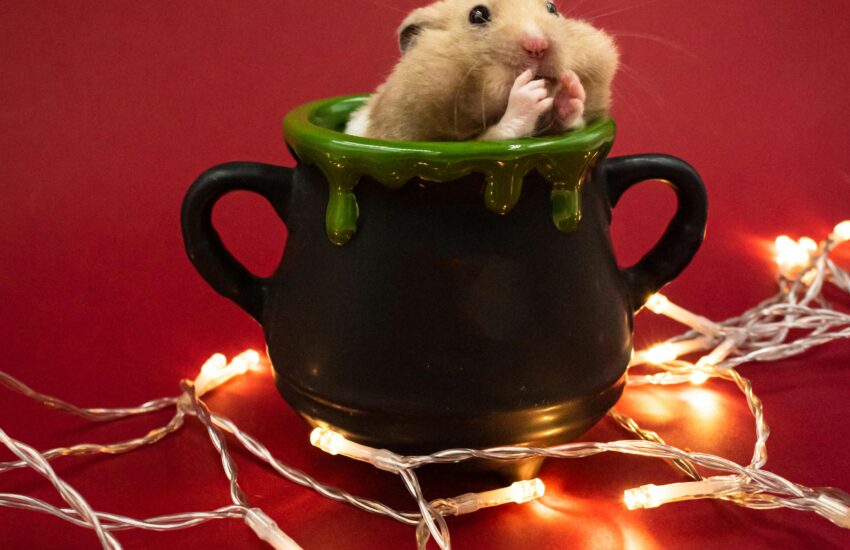Creative Hamster Hideaway Ideas to Enrich Your Pet’s Environment
Why Hamster Hideaways are Important
Creating a comfortable and engaging habitat for your pet hamster is essential for their health and happiness. **Hamster hideaways** provide not just a place to sleep but also a space for them to exhibit their natural instincts, such as hiding, burrowing, and exploring. When you incorporate various **hiding spots** into their enclosure, you are enhancing their **well-being** by reducing stress and encouraging exercise. Moreover, these hideaways can help regulate their temperature and offer a safe place to retreat when feeling threatened.

Types of Hamster Hideaways
There are numerous **types of hideaways** available to choose from. Some popular options include wooden structures, cardboard boxes, and even natural materials. Each of these provides distinct benefits. For example, wooden hideaways are durable and often well-ventilated, while cardboard boxes can be easily replaced and are great for chewing. Additionally, **natural hideouts** made of coconut shells or living plants can create a stimulating environment. Whatever you choose, make sure it’s safe for your pet by avoiding toxic materials.
DIY Hamster Hideaway Ideas
If you’re looking for a budget-friendly option, consider making your own **DIY hamster hideaways**. Using materials like cardboard, toilet paper rolls, and even empty plastic containers can result in fun and functional hideouts. For instance, you can create a multi-level hideout by stacking boxes, allowing your hamster to climb and explore. Decorate them using pet-safe paints or simple landscaping with natural elements to create a welcoming space.
Enhancing Your Hamster’s Environment
In addition to hideaways, enriching your hamster’s environment overall is crucial. Incorporating tunnels, chew toys, and exercise wheels can create a dynamic habitat. Adding different textures, such as various substrates and climbing materials, stimulates their senses, encouraging exploration. After all, an engaged hamster is a happy hamster!
Integrating Hideaways into a Larger Setup
When integrating hideaways into your hamster’s habitat, think about the overall layout. Position **hiding spots** near activity areas, such as water bottles and food dishes, so your pet feels safe while eating or drinking. This setup not only makes them feel secure but can also promote more frequent outings from their hides. Remember to rotate and change their environment periodically to keep their interest high.
Choosing the Right Size and Space
Choosing the right size for hideaways is essential. If a hideaway is too small, your hamster may feel cramped and stressed. Conversely, if it’s too large, they might miss the security of a snug, enclosed space. Generally, a hideaway should allow your hamster to turn around comfortably and feel cozy. A great tip is to observe how your hamster interacts with different sizes to determine what works best.

Maintenance and Hygiene of Hideaways
Proper maintenance is vital for your hamster’s hideaways. Regularly clean the hideouts to prevent odor buildup and bacteria growth. Using **pet-safe cleaning solutions** or simple water and vinegar can ensure a safe cleaning method. It’s also a good idea to keep an eye out for any signs of wear and tear. **Replacing old hideaways** ensures your pet remains in a safe and hygienic environment.
Signs Your Hamster’s Hideaway Needs Attention
Being vigilant about your hamster’s hideaway is crucial. If you notice your hamster avoiding their hideaway, it might indicate discomfort or an issue with the structure. Furthermore, signs of nibbling, excessive moisture, or frayed edges could signal it’s time for a replacement. A great practice is to check their living conditions weekly to maintain their well-being. Consulting with a vet can also help if you’re unsure about your pet’s habits.
Tips for Hygiene Maintenance
To maintain hygiene, it’s advisable to spot-clean hideaways frequently while doing a deeper cleaning every one to two weeks. Use a small brush or cloth to remove any waste or food remnants. When performing a complete clean, disassemble the hideaway if possible, and wash all components thoroughly. Always ensure they are completely dry before reintroducing them to your hamster’s environment.
Final Thoughts on Hamster Hideaway Ideas
Creating an enriching and comfortable habitat for your hamster through thoughtful hideaway options is essential for their happiness. From selecting the right types of hideouts to considering DIY projects, there are many ways to make your pet’s environment engaging and safe. With regular maintenance and careful observation, you can provide the perfect haven that will enhance your pet’s life.
FAQ
1. How often should I change my hamster’s hideaway?
It’s recommended to replace your hamster’s hideaway every few months or sooner if you notice signs of wear and tear. Regular cleaning (every one to two weeks) can extend the lifespan of the materials while ensuring a hygienic environment.
2. Are there specific materials I should avoid for hamster hideaways?
Yes, you should avoid any materials that are toxic to hamsters, such as treated wood, certain plastics, and anything with harmful paint or adhesives. Always opt for natural, chew-safe materials for your hamster’s safety.
3. Can I use plants in my hamster’s hideaway?
Yes, but be sure to choose non-toxic plants that are safe for hamsters. Always research the specific types of plants and their effects on your pet before introducing them to the habitat.
4. What should I do if my hamster hides too much?
If your hamster is constantly hiding, it may indicate stress or discomfort in their environment. Assess their habitat, check for any disturbances, and ensure they have plenty of enrichment, like toys and tunnels.
5. Are there benefits to multi-level hideouts?
Absolutely! Multi-level hideouts provide your hamster with diverse spaces to explore, enhancing their physical activity and mental stimulation. They can also mimic their natural burrowing habits, making them feel more secure in their environment.
